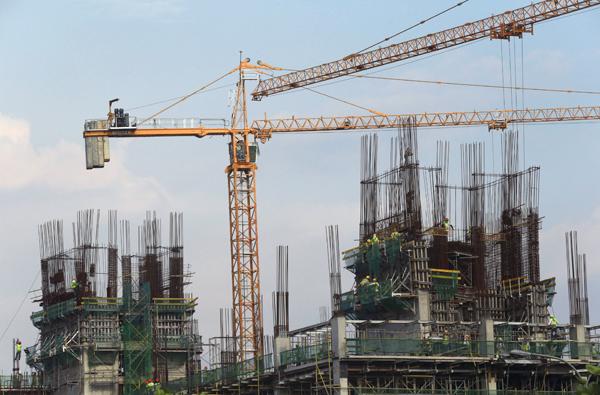You are here
Asia growth risks being dampened by China slowdown — ADB
Apr 01,2014 - Last updated at Apr 01,2014

HONG KONG — The Asian Development Bank (ADB) on Tuesday said growth in developing Asia will edge higher over the next two years, but faces being constrained by China's campaign to cool its economy.
The Manila-based lender said in a forecast that adjustments in China, the world's second-largest economy and a key growth driver, could offset improving demand as growth picks up in advanced economies such as the United States, Europe and Japan.
The ADB estimated that gross domestic product (GDP) for developing Asia, which covers 45 nations, will grow 6.2 per cent this year before edging up to 6.4 per cent in 2015. Last year, the region expanded by 6.1 per cent.
"At this rate, developing Asia will remain the fastest-growing region in the world and the largest contributor to global growth," ADB deputy chief economist Zhuang Juzhong told a press conference in Hong Kong.
However "East Asia will see its growth trend flatten as growth moderates in the People's Republic of China," the lender said in its Asian Development Outlook 2014 statement, citing Chinese authorities' efforts to control credit growth.
"The regional growth outlook depends on continued recovery in the major industrial economies and on the People's Republic of China managing to contain internal credit growth smoothly," it added.
The ADB expects China's economic growth to slow to 7.5 per cent this year, and a further drop to 7.4 per cent in 2015, from 7.7 per cent last year.
"The government continues to shift priority towards quality of growth. This may slow China's growth in the short term but will make growth more sustainable in the longer term," Zhuang indicated.
At a separate briefing in Beijing, ADB economists said China's efforts to rebalance its economy are bearing fruit.
China's service sector grew more strongly last year than did industry and now accounts for a larger share of GDP, indicated Jurgen Conrad, who heads the ADB's economics unit in China's capital.
He described that as "a major achievement from the point of view of domestic rebalancing", though he added that the economy was still mainly driven by investment growth even as consumption showed strength.
China's leadership says it wants to transform the country's growth model away from an over-reliance on often wasteful investment and instead make private demand the driver for more sustainable future development.
The ADB forecast the South Asia region to grow by 5.3 per cent this year, relying on continuing reform in India which is "operating below its potential" with a forecast 5.5 per cent expansion in 2014.
Southeast Asia suffered a blow last year with softened export and economic slowdowns in various countries, as GDP decelerated to 5 per cent last year. The ADB said similar expansion is expected in 2014.
It also warned that US tapering could bring fluctuations in financial markets although the risks would be "manageable".
"Developing Asia now is in a much better position to weather shocks like that," Zhuang said, adding that many countries in the region have surpluses and stronger banking systems.
Founded in 1966, the ADB aims to reduce poverty in Asia by helping its 67 member countries evolve into modern economies through investment in infrastructure, financial and public administration and health services.
Related Articles
MANILA — The Asian Development Bank (ADB) on Wednesday cut its 2022 growth forecast for developing Asia, with crippling COVID-19 lockdowns i
HONG KONG — Weaker growth in China this year is expected to cause a slowdown in the rest of Asia, the Asian Development Bank (ADB) said Tues
BEIJING — Huge industrial overcapacity in China will drag on both the country's and the region's growth this year, the Asian Development Ban
















